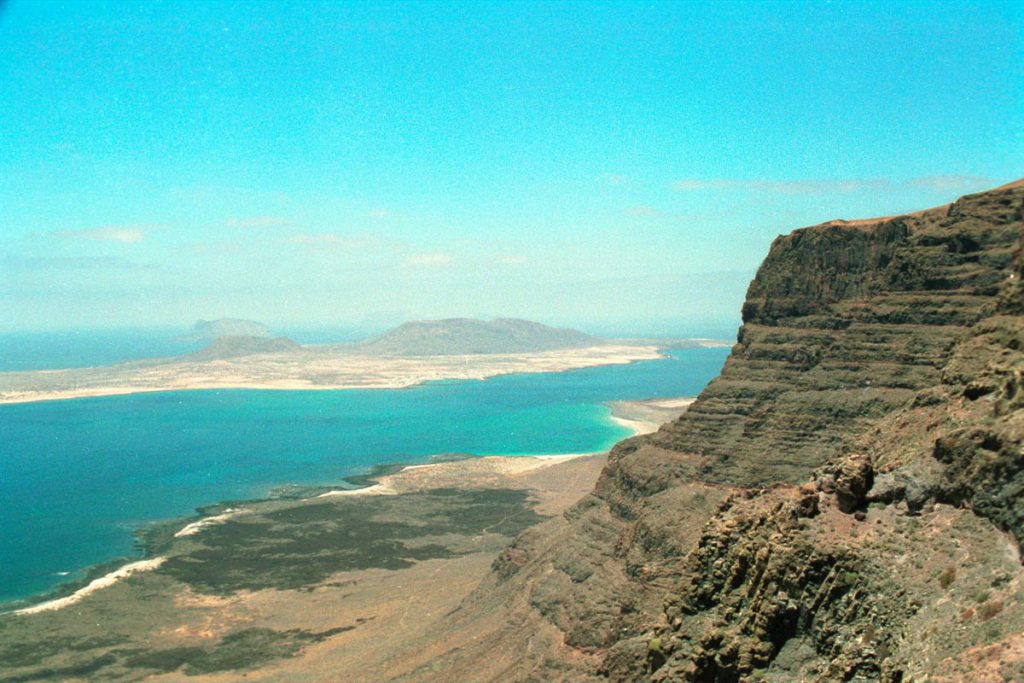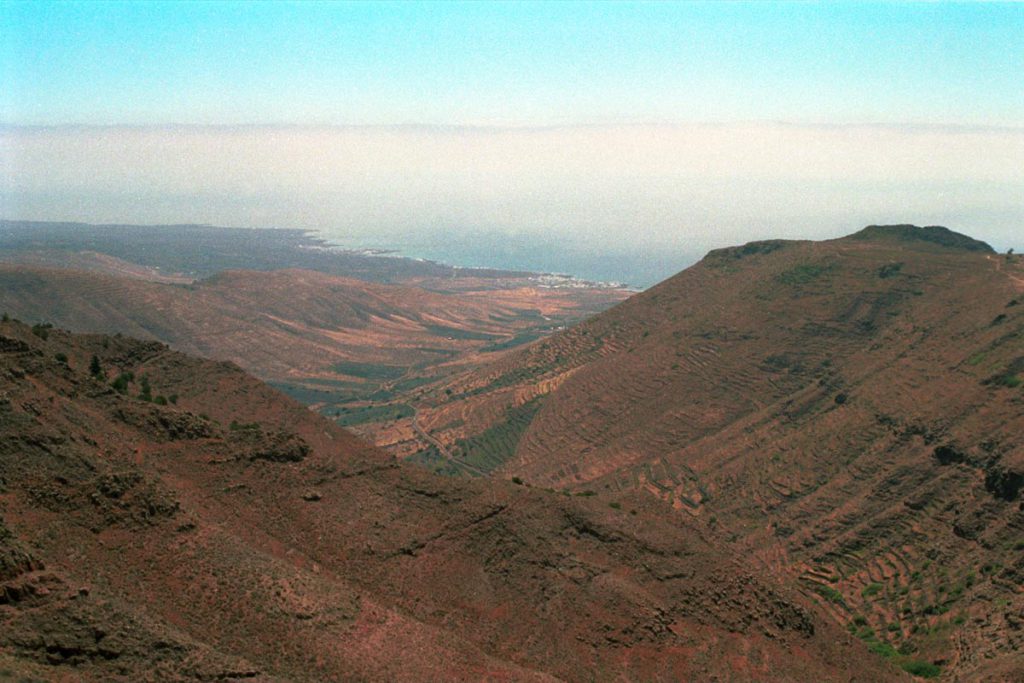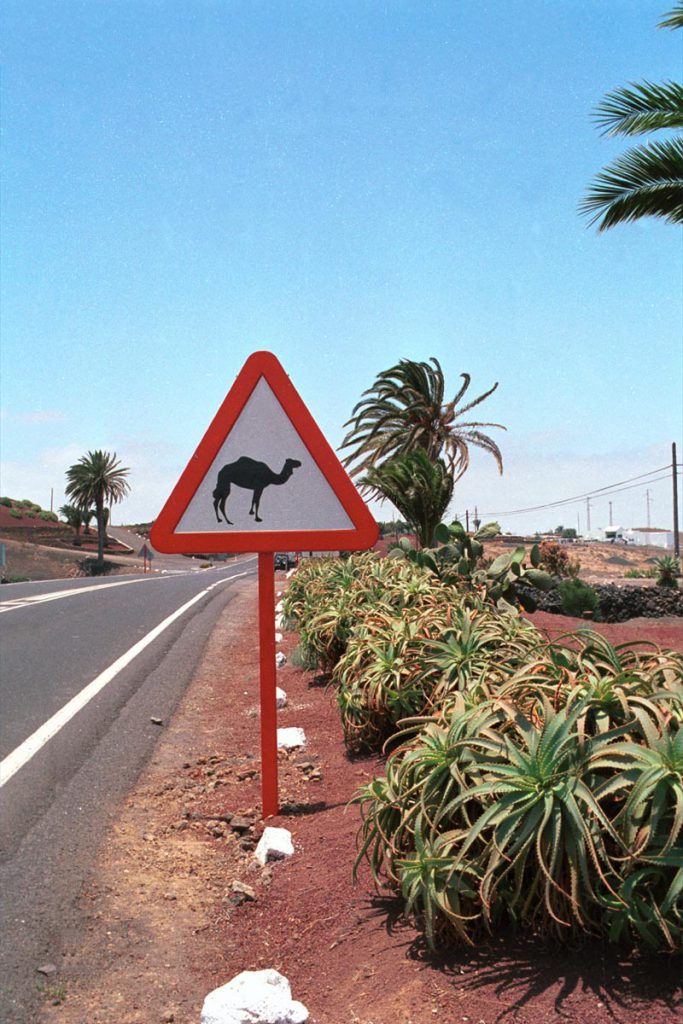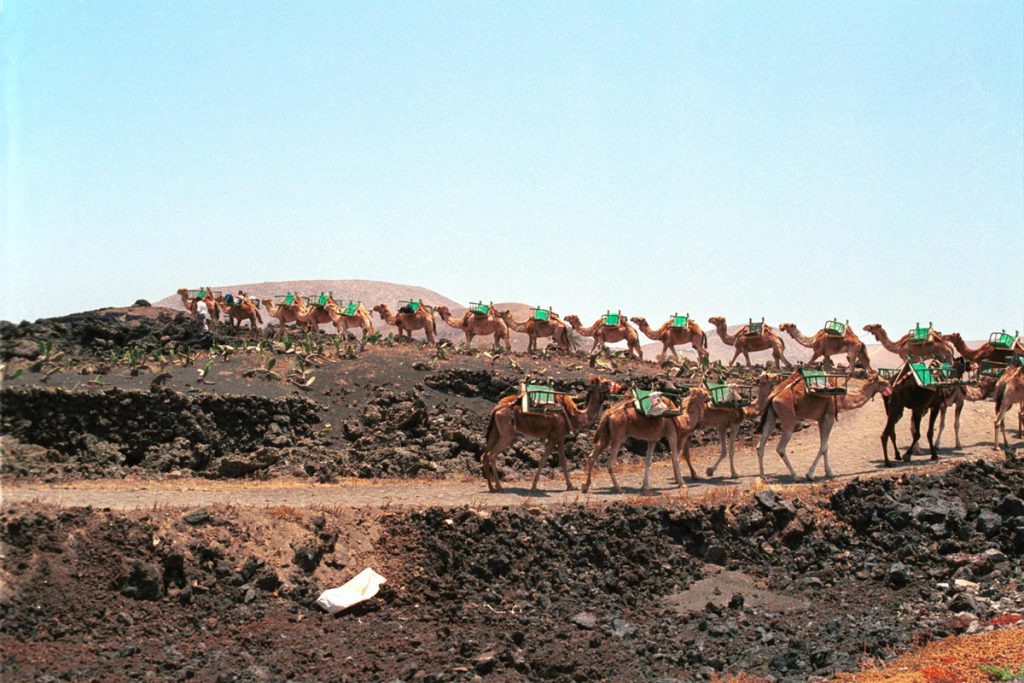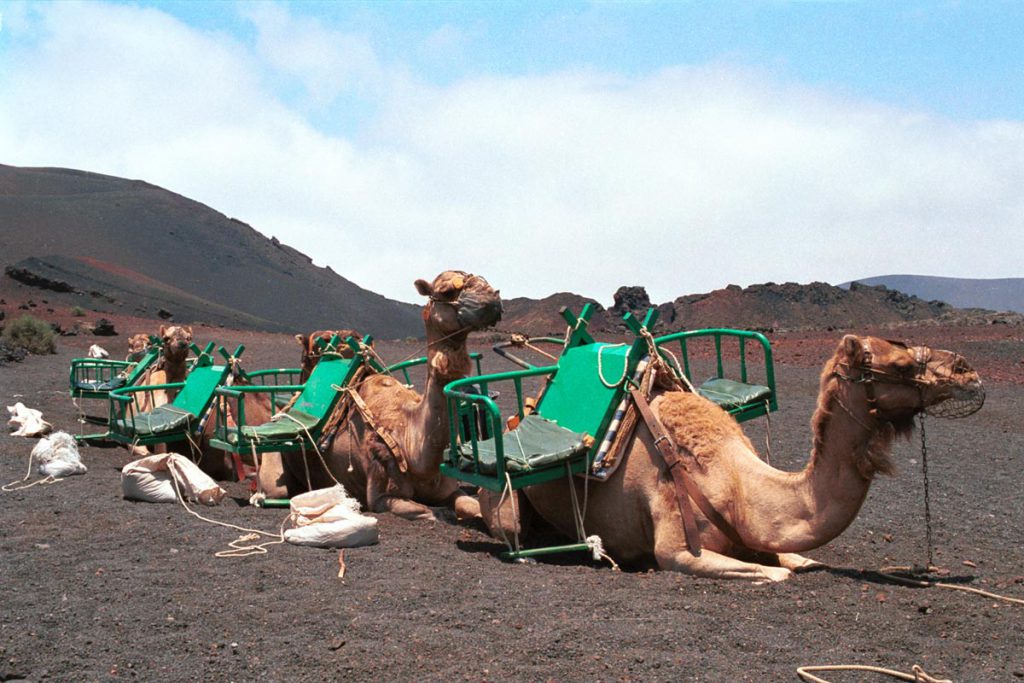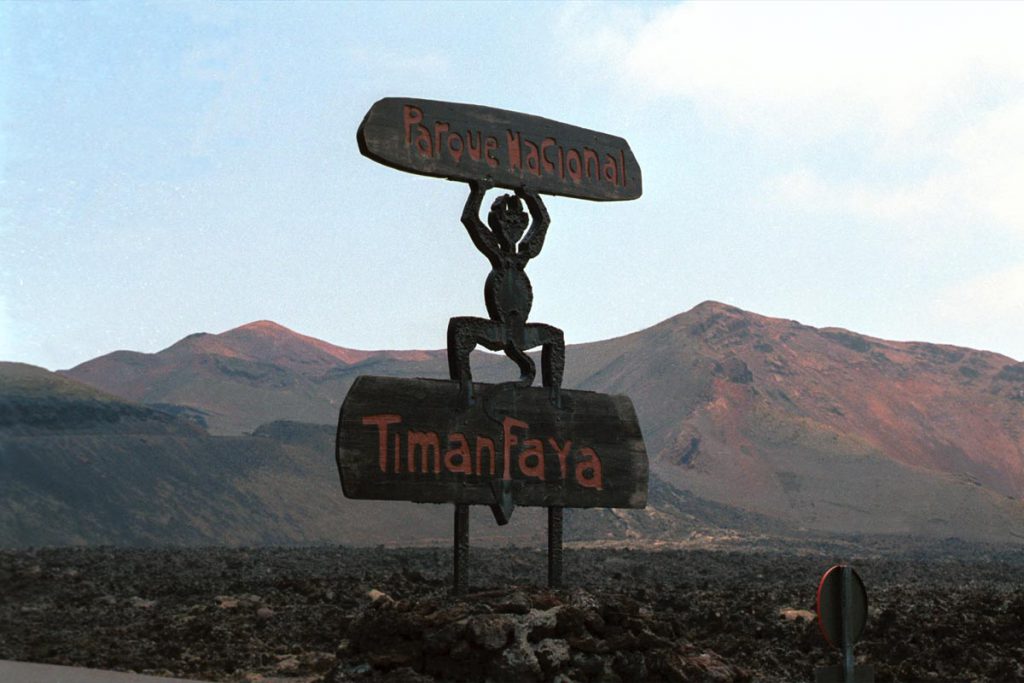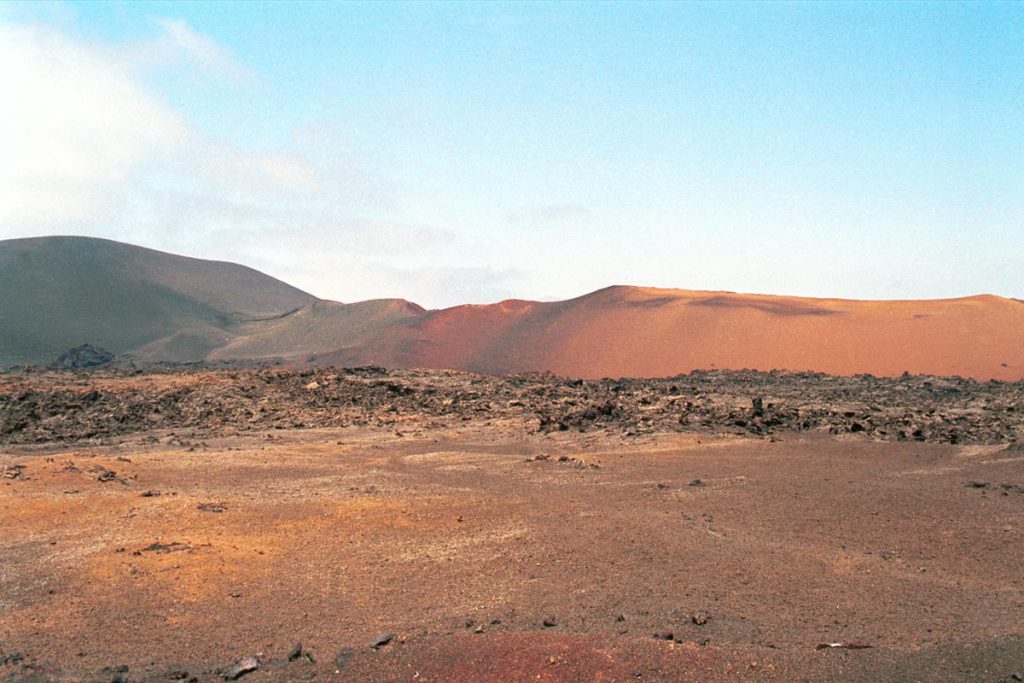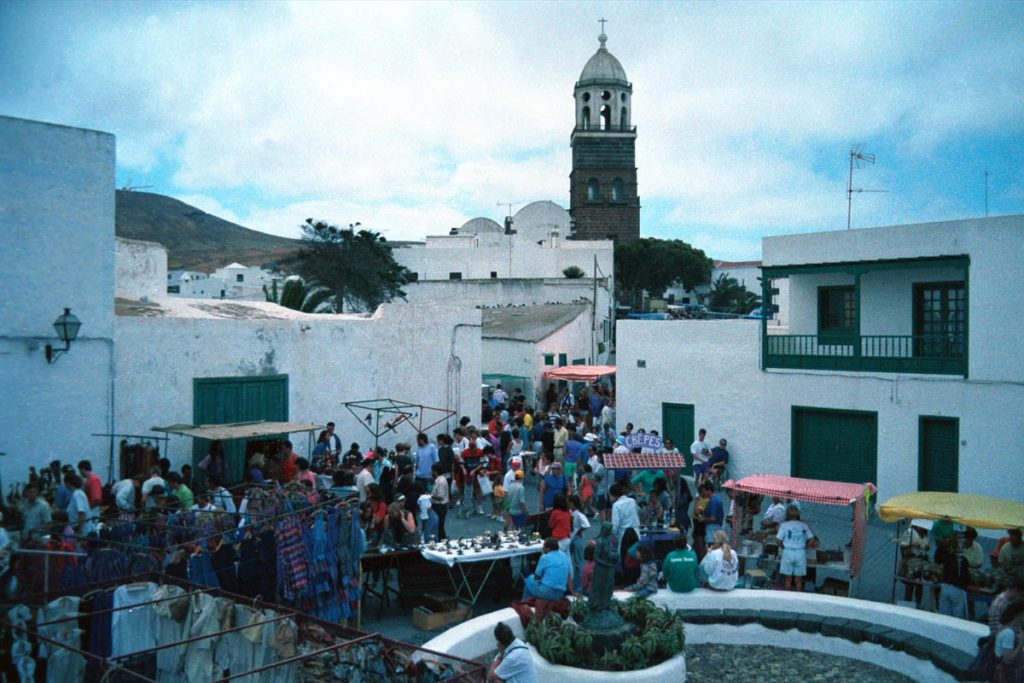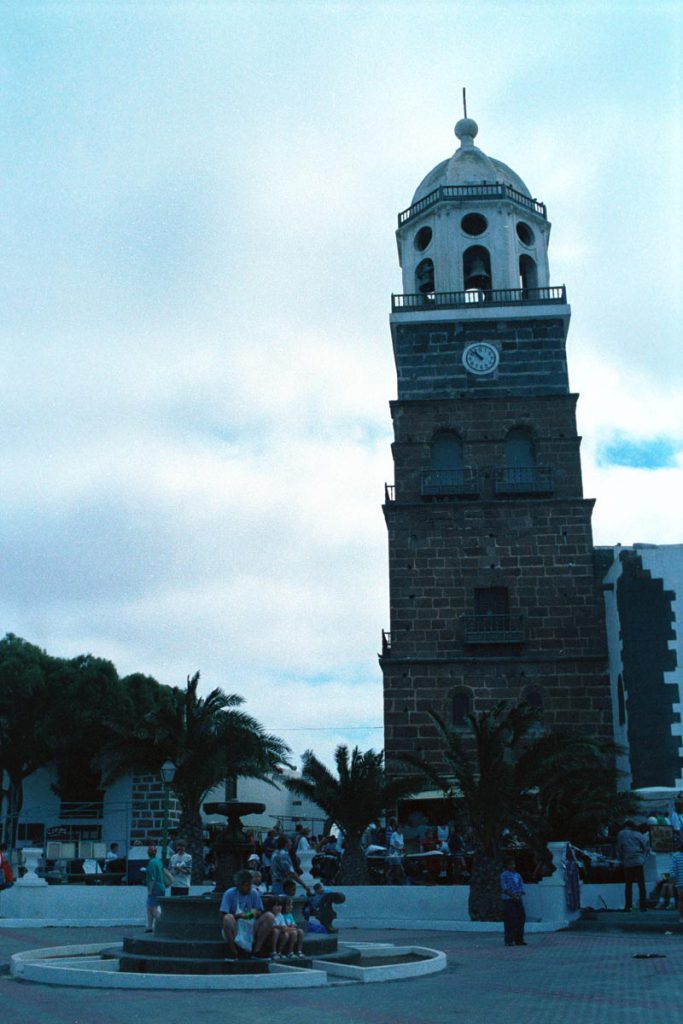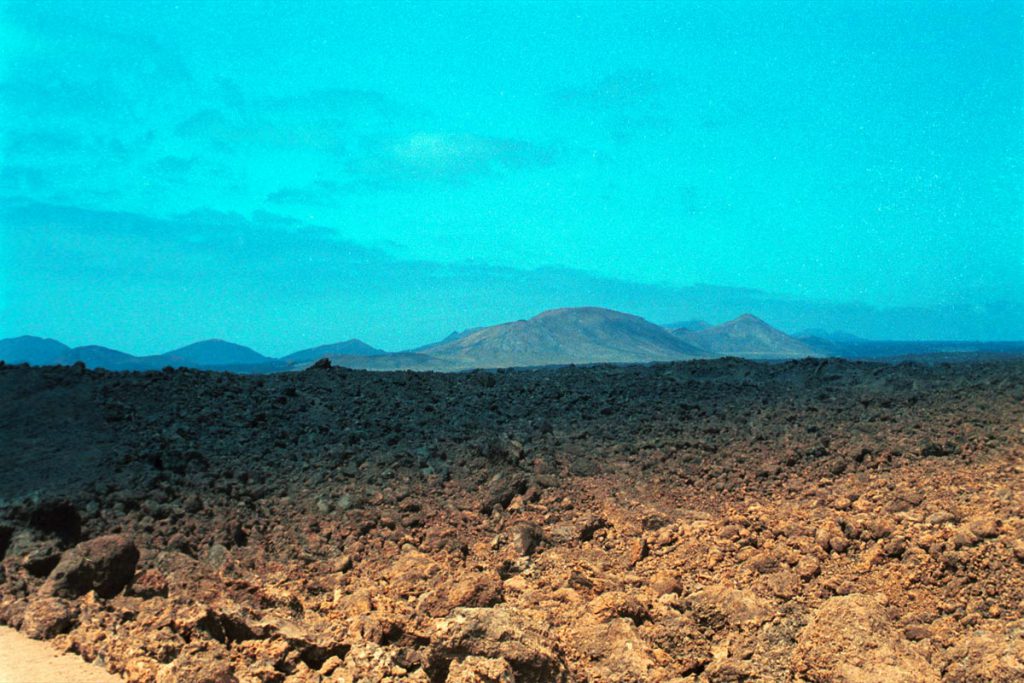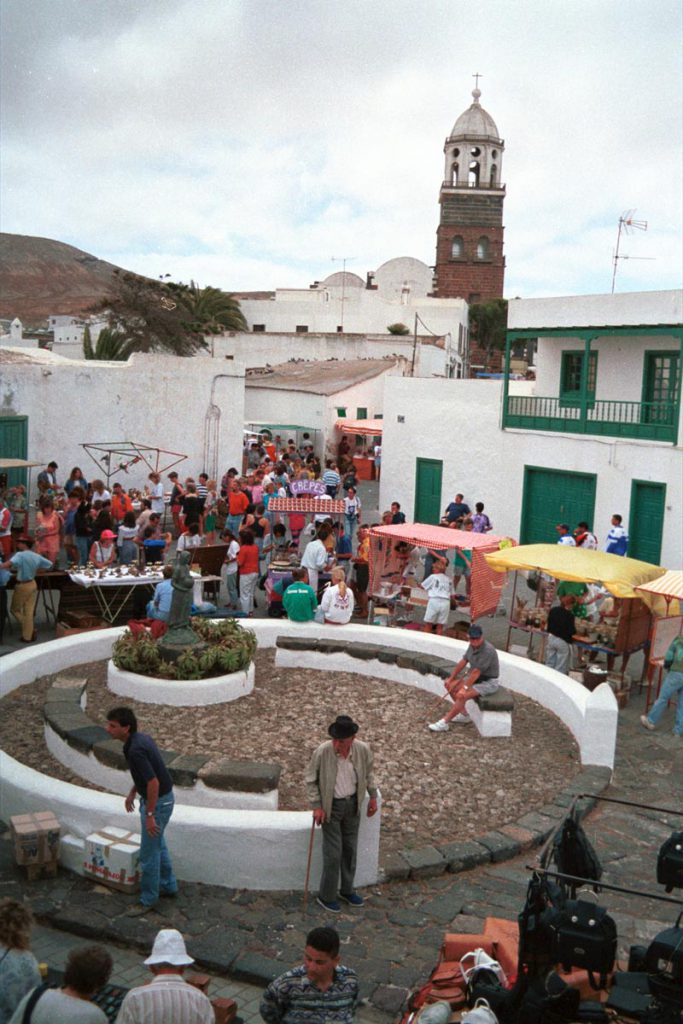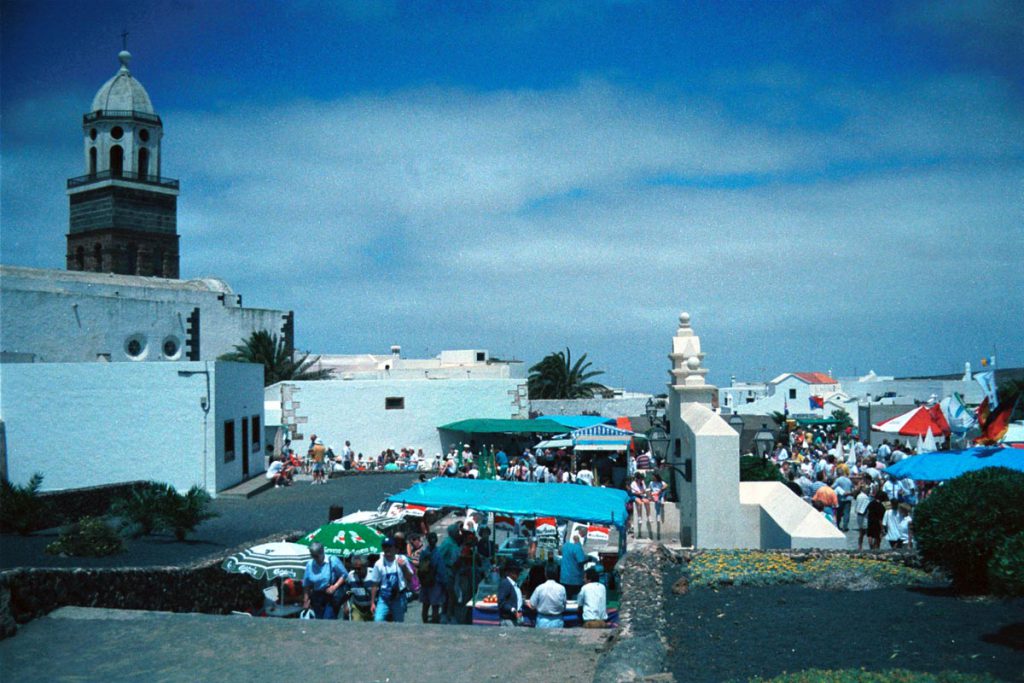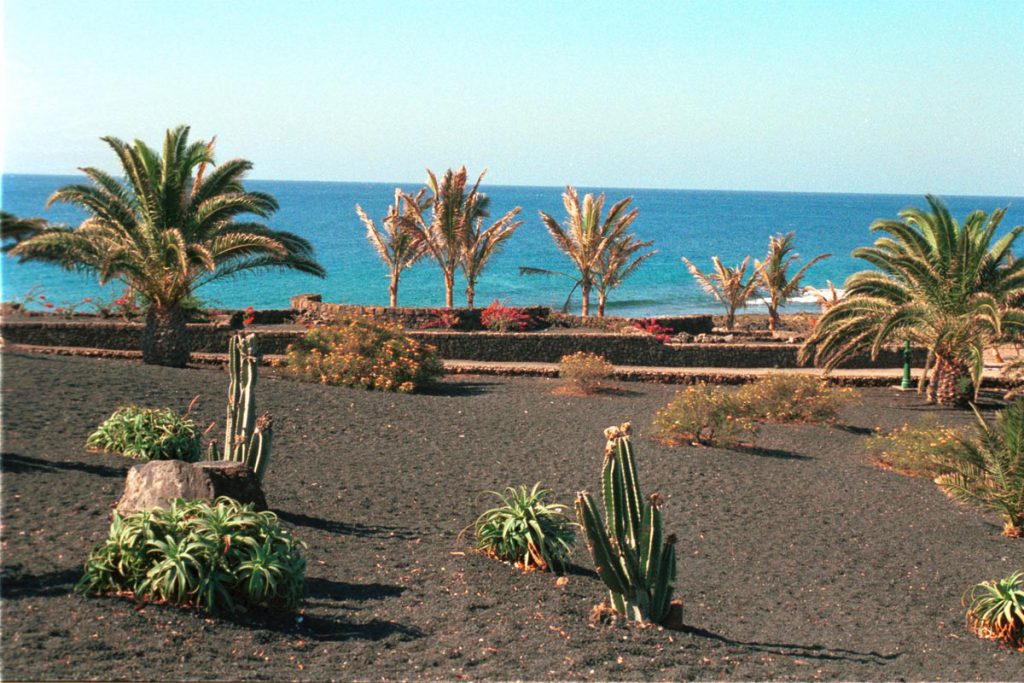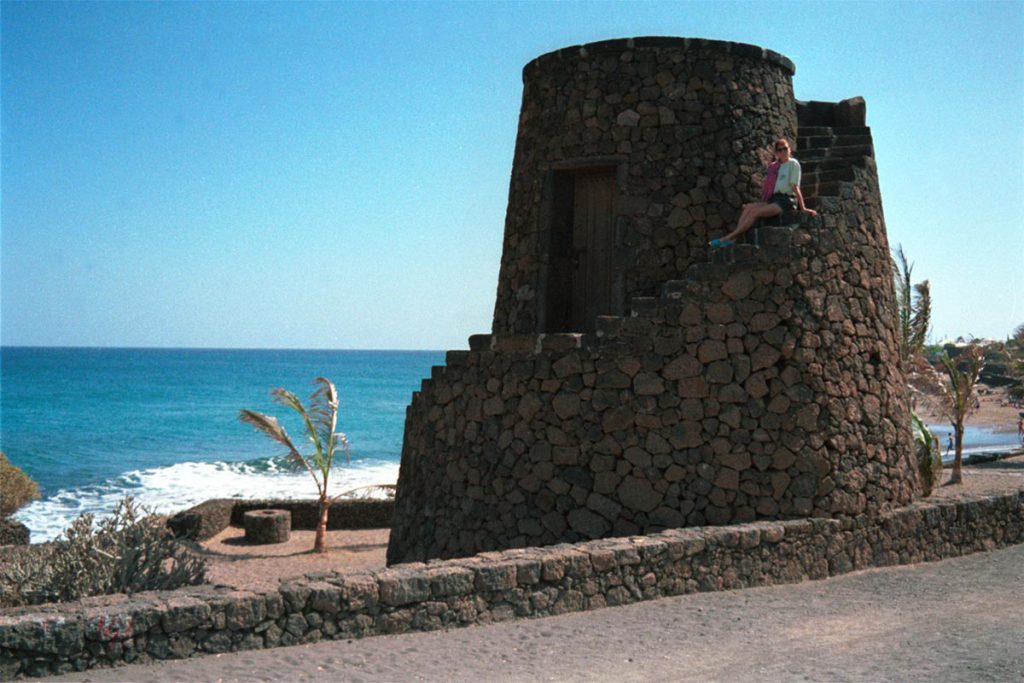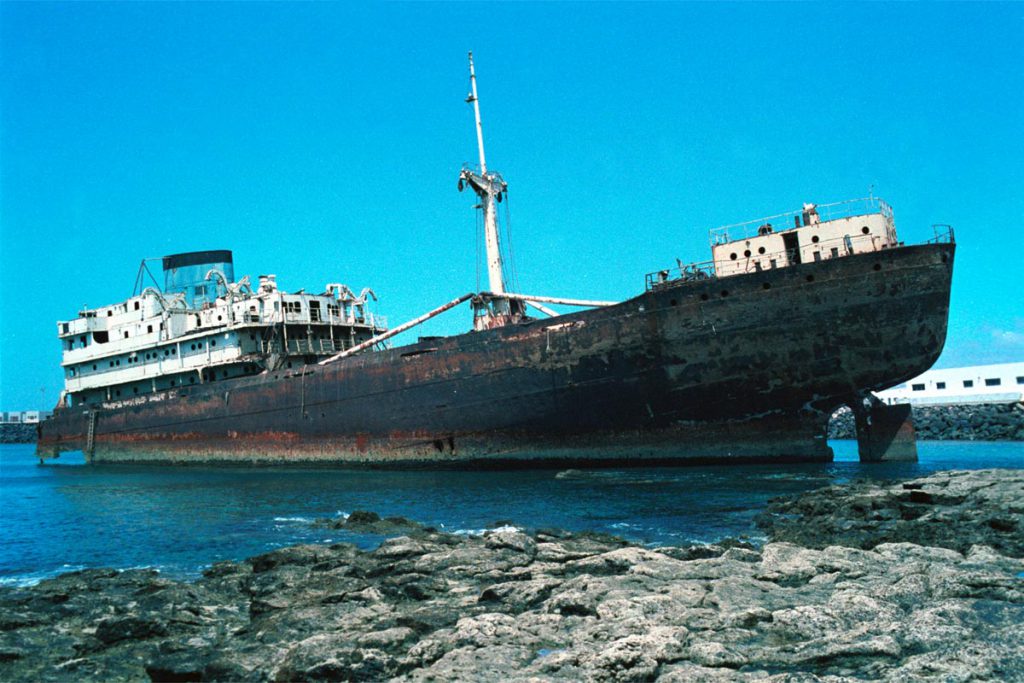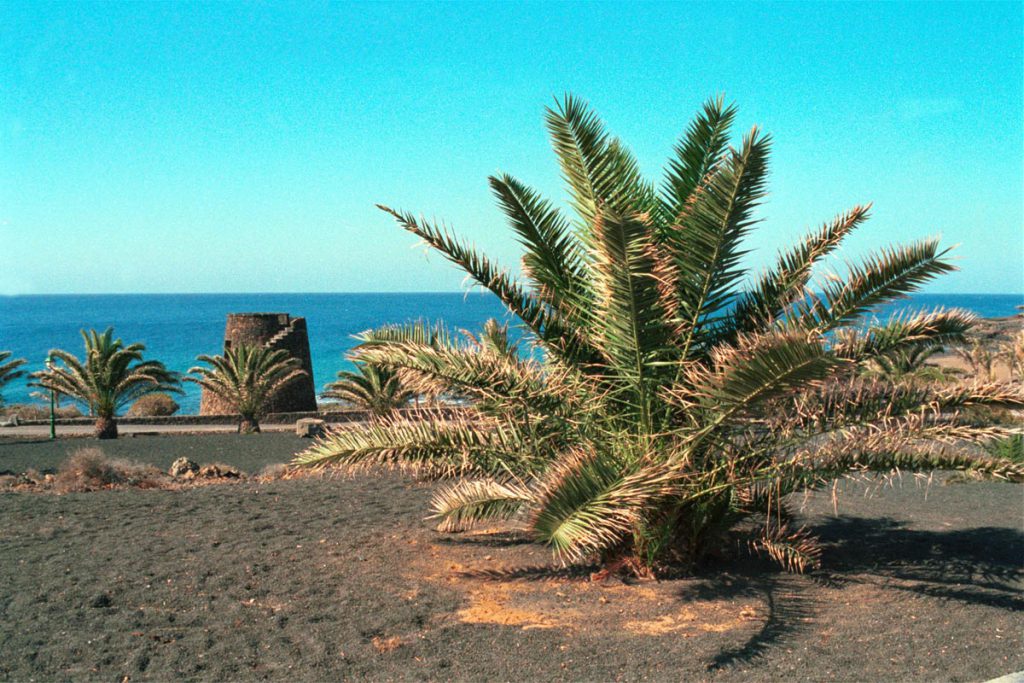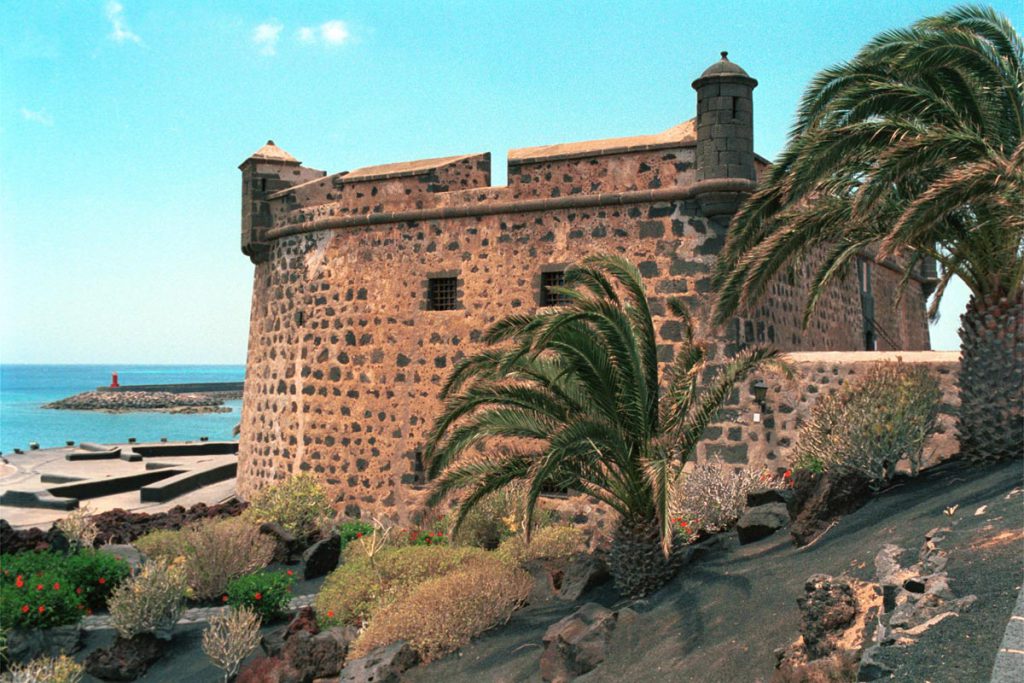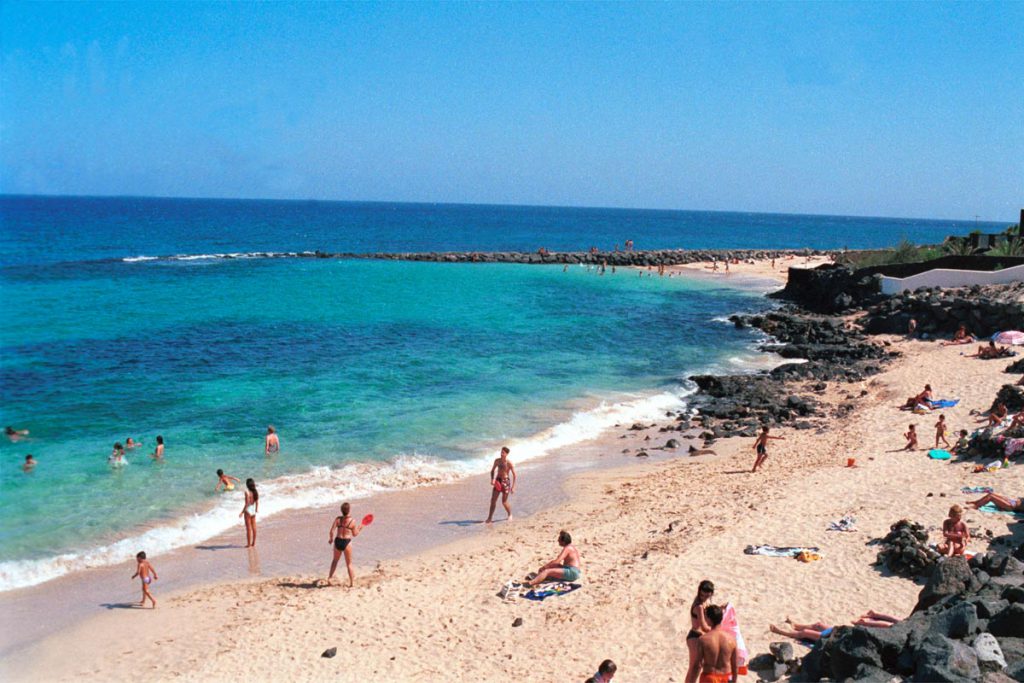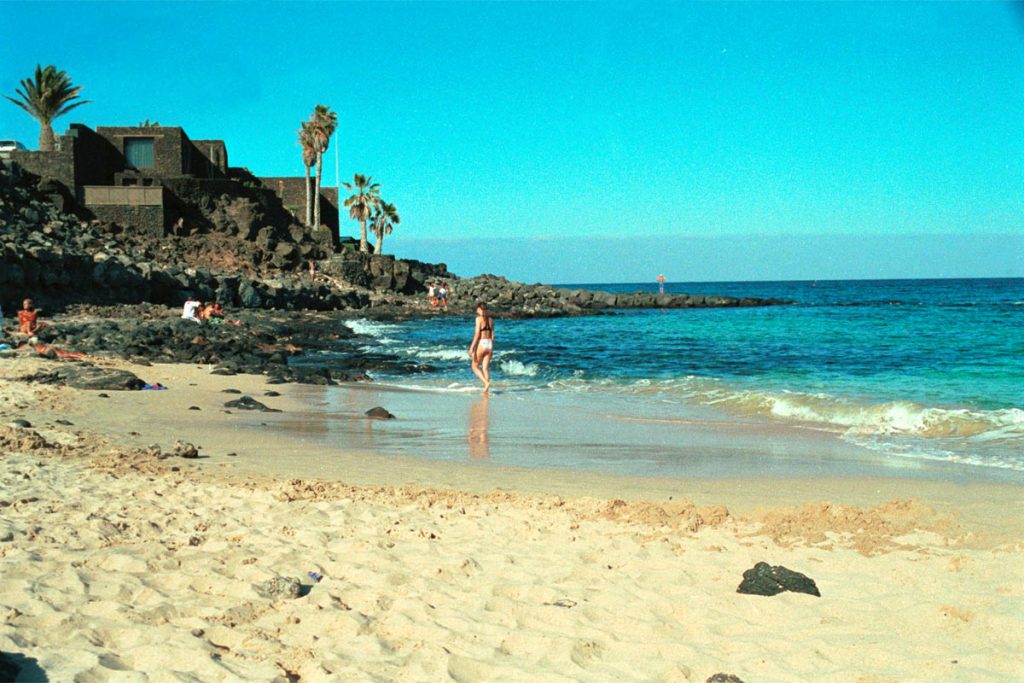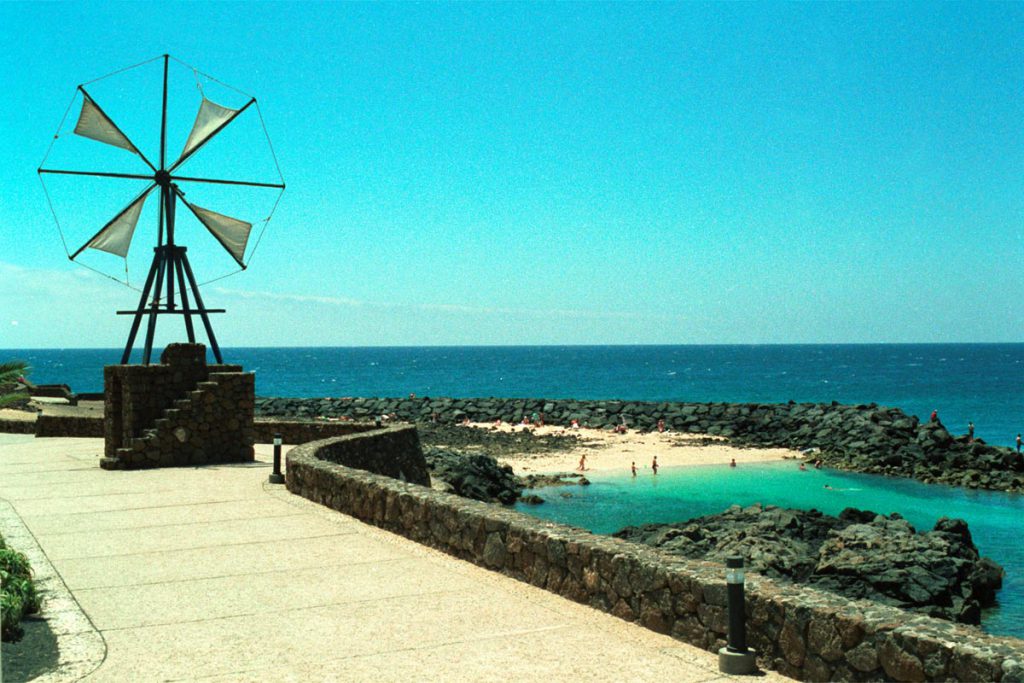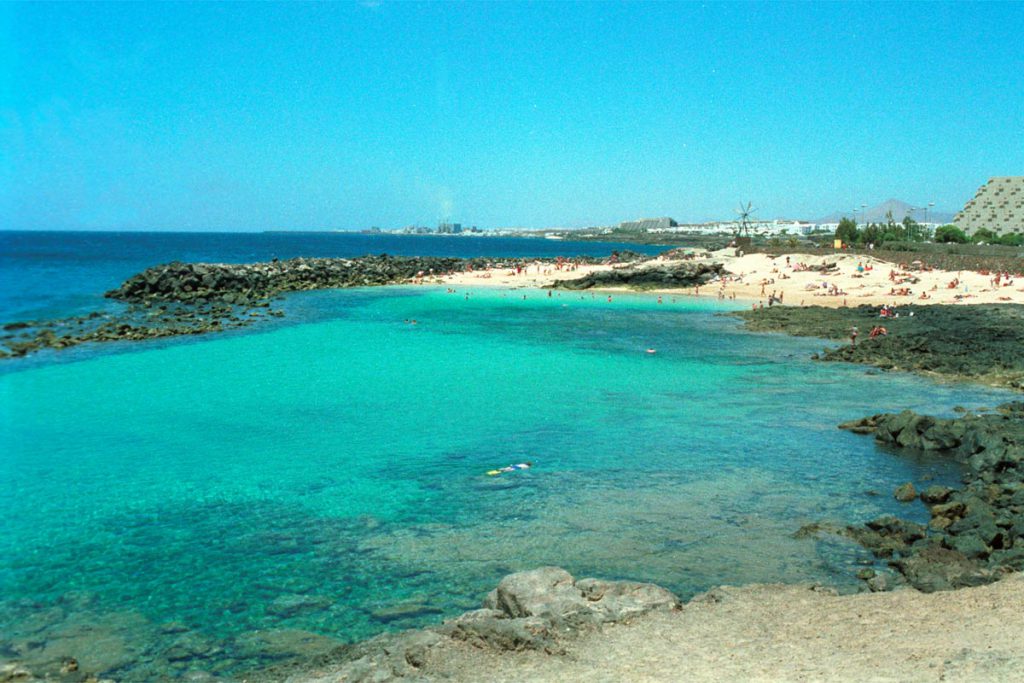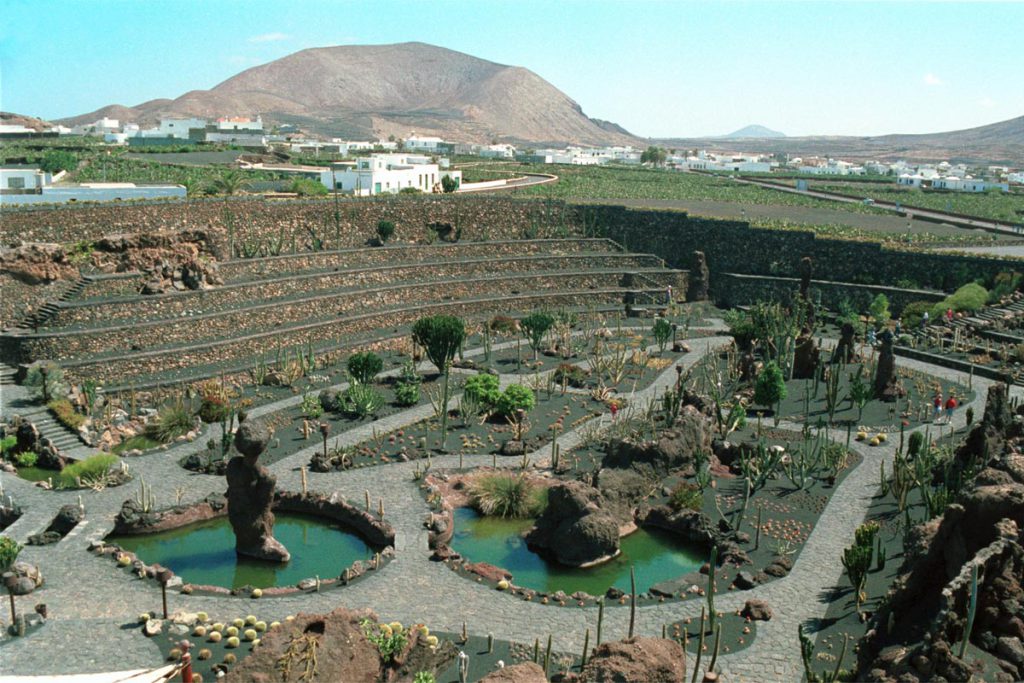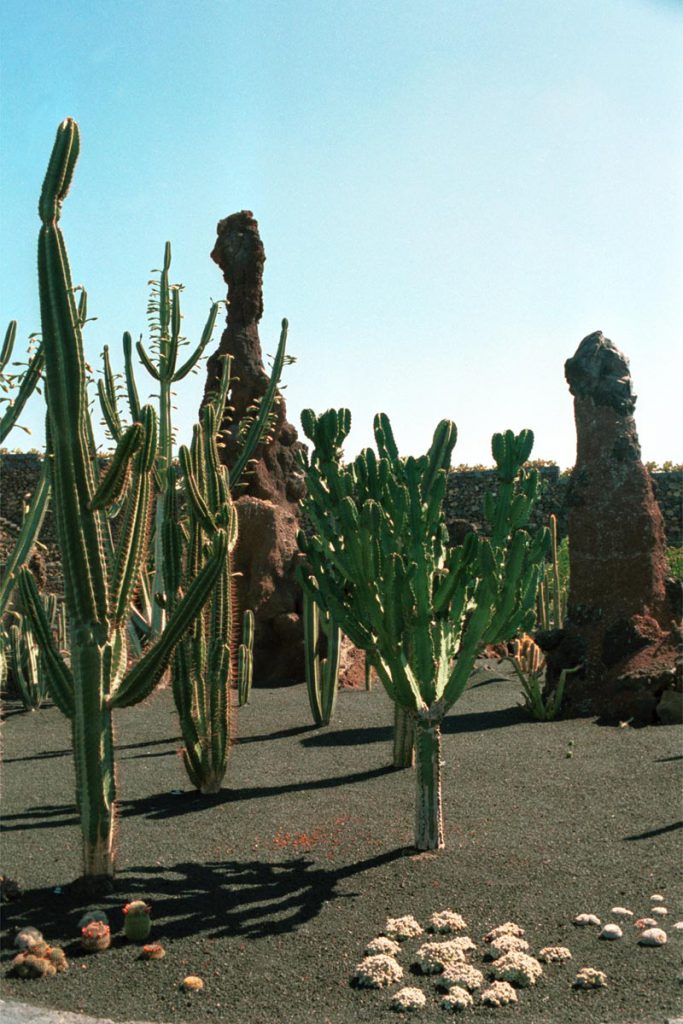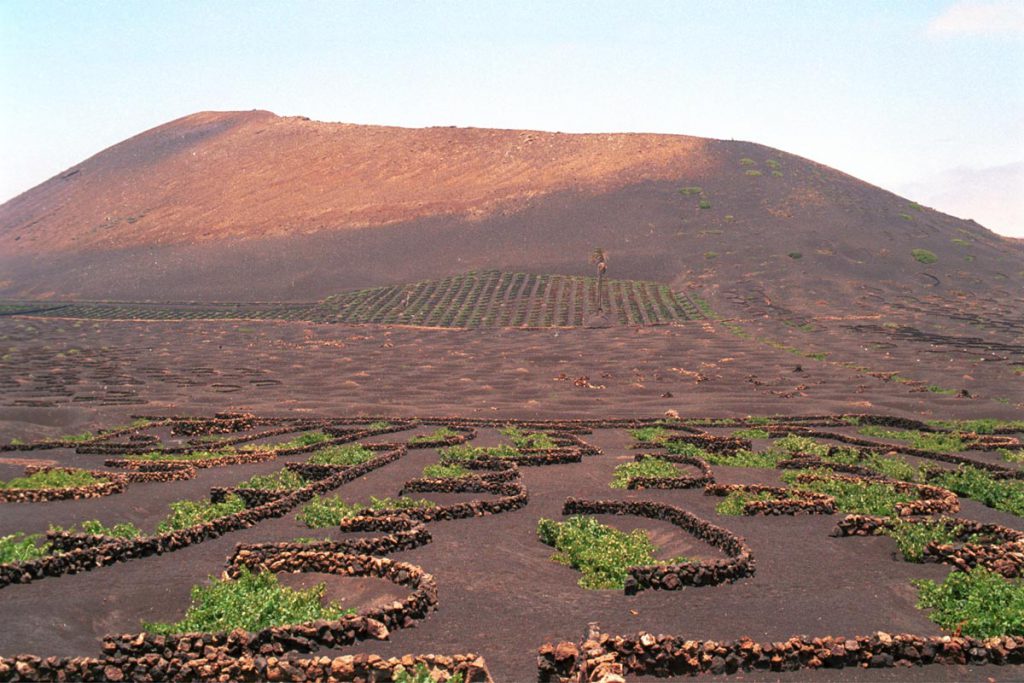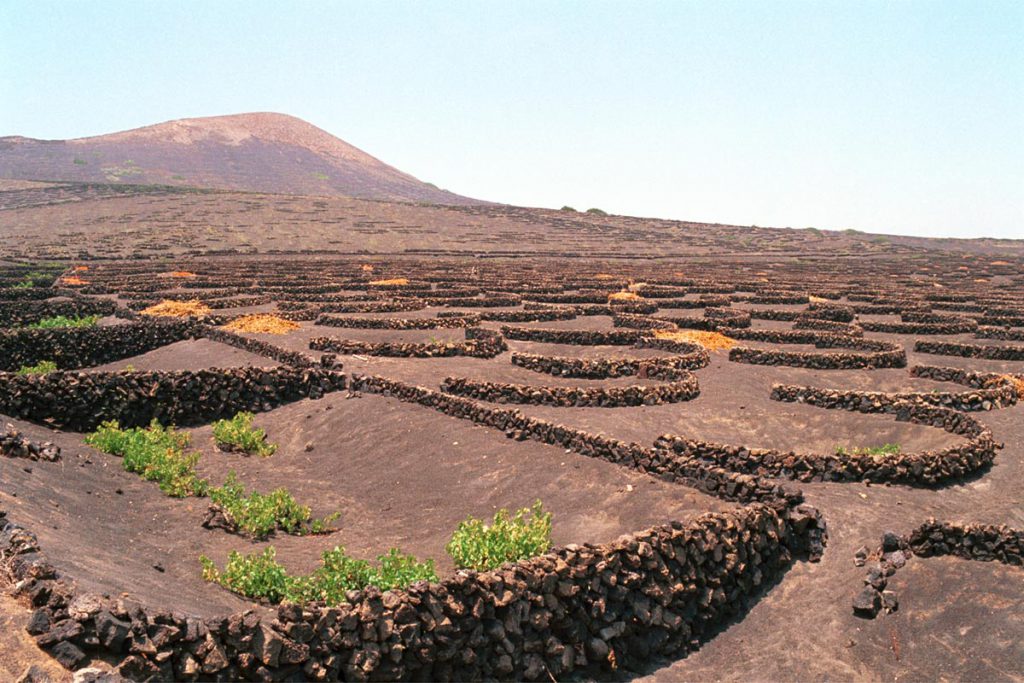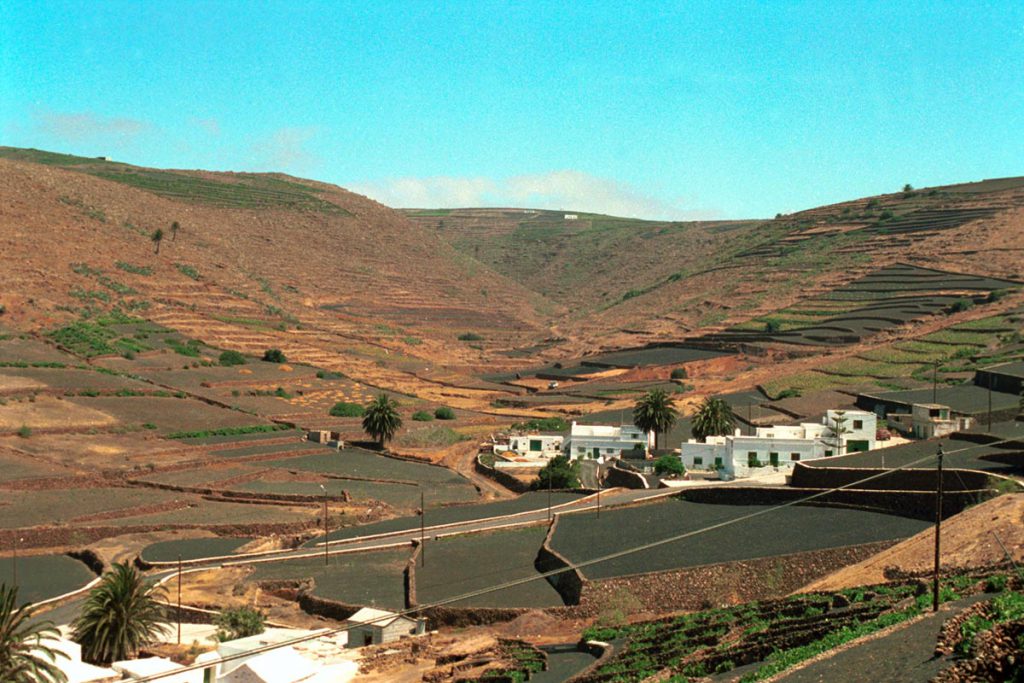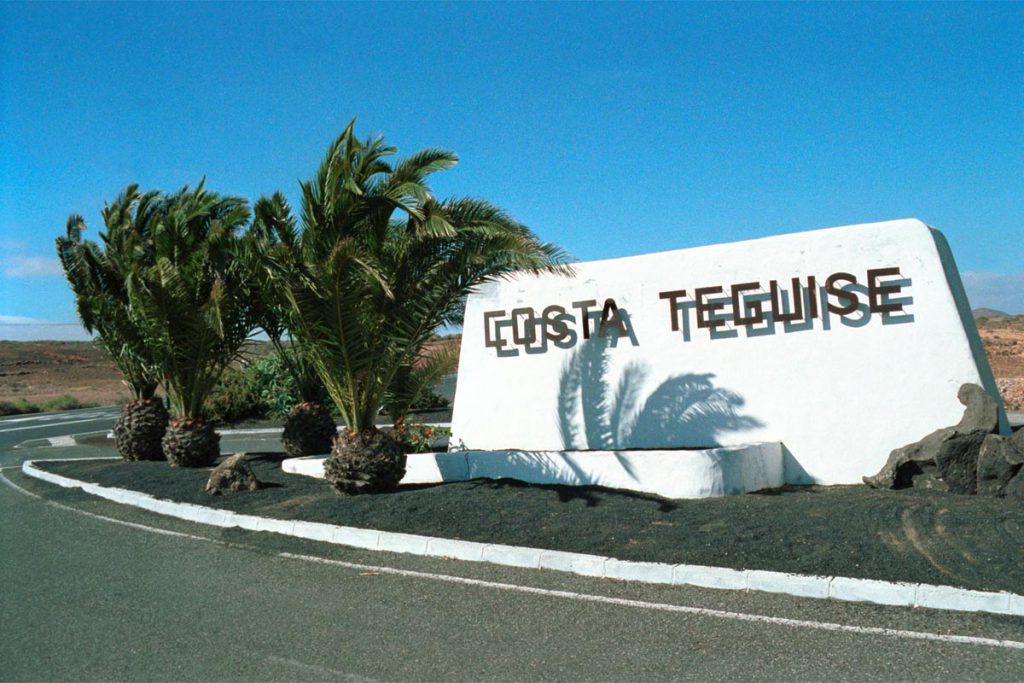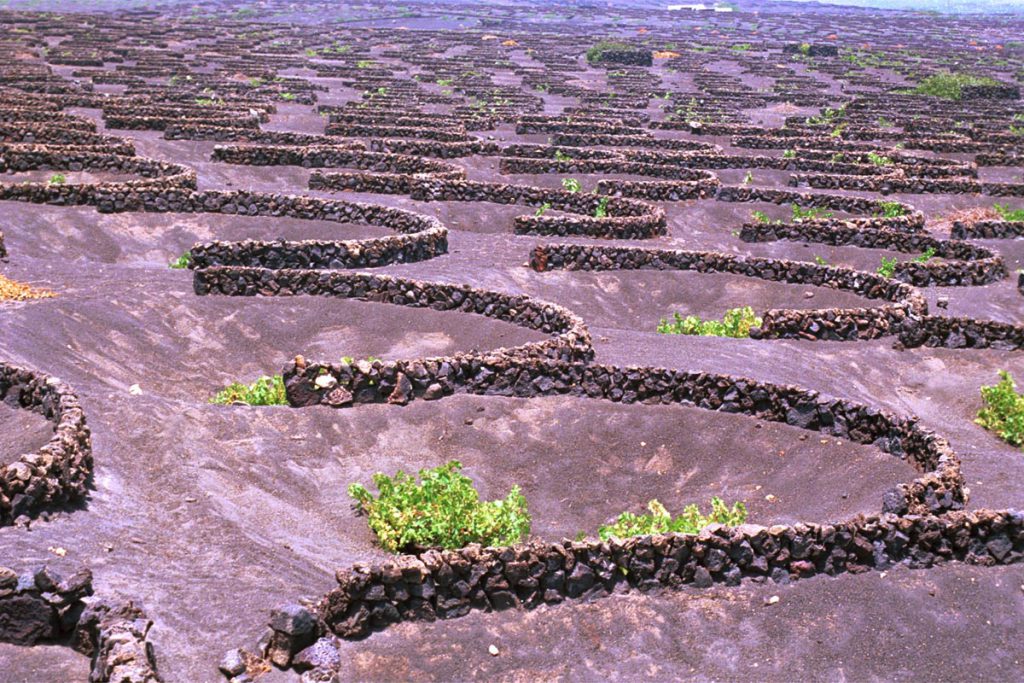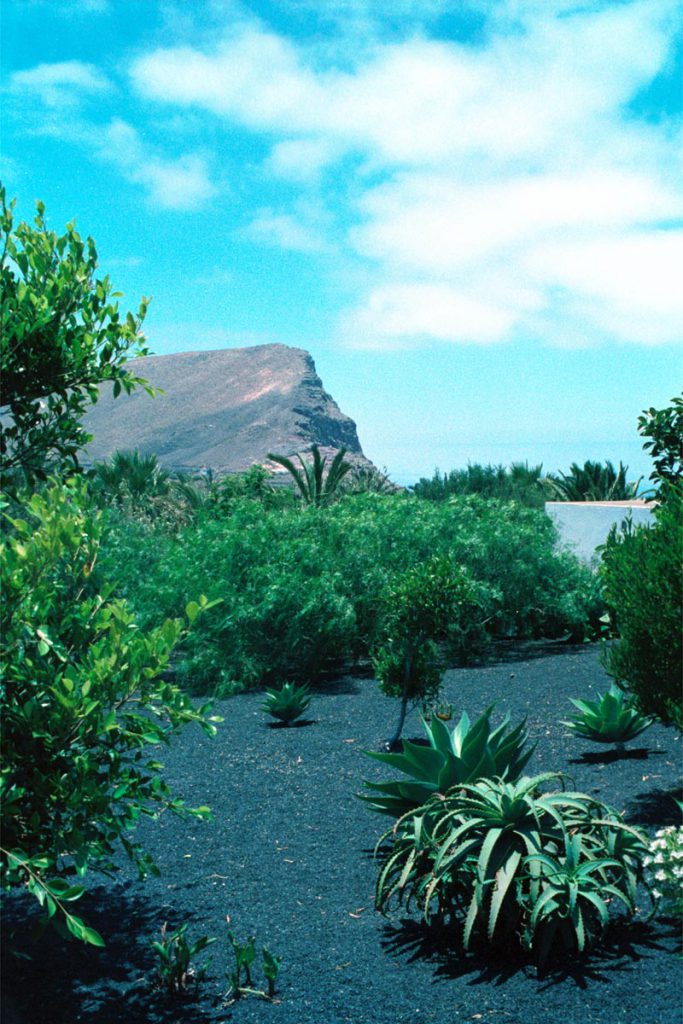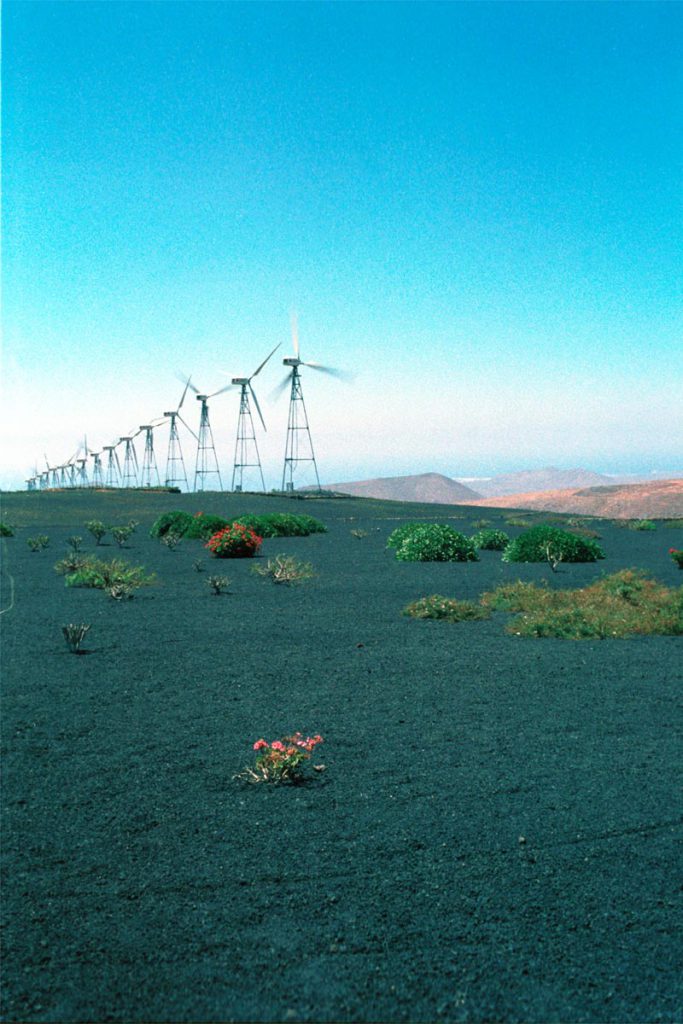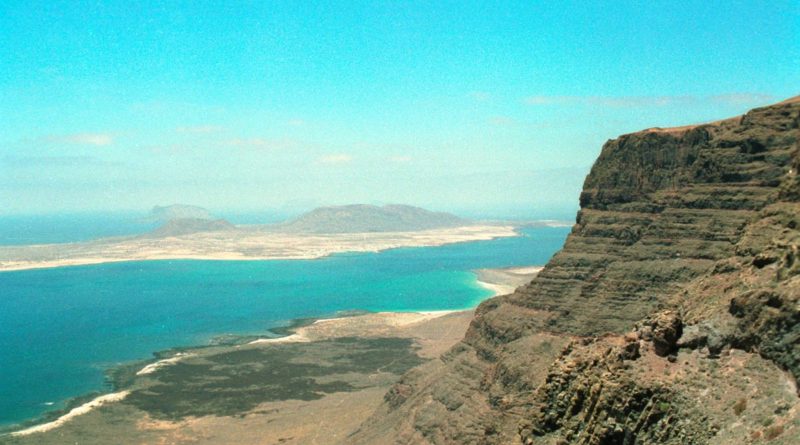Lanzarote
In 1994, Lanzarote was declared a Reserve of the Biosphere by UNESCO. Lanzarote lies in the Atlantic Ocean, about 100 km from the African coast and 1,000 km from the Iberian Peninsular. It is the most easterly of the seven main Canary Islands, once known as the Fortune Islands. Lanzarote was formed by a volcanic eruption about 15 million years ago, and has mountain ranges in the north and south, and desert lava fields abound. It claims to have the longest underwater volcanic tunnel in the world at over 7km long. The last volcanic eruption was in 1824. Its coastline of 213km (132 miles) is mostly rocky, but there are good beaches at Playa Blanca, Papagayo and Caleton Blanco.
Lanzarote has a population of almost 100,000 with most living in the south-central part of the island.
In earlier days, fishing and agriculture formed the basis of the island’s economy but these have long been overtaken by an excellent tourist industry. Considerable care has been taken to preserve the islands’ historical and cultural heritage together with its character and customs.
Owing to its advantageous position, the island enjoys an average all-year-round temperature of around 22ºC. Attractions include the Cave of Los Verdes, a complex cave system formed by lava flows, the Casa Museo of the traditional family farming techniques of the island, and the Wine Museum of Lanzarote, housed in 18th century cellars (open daily at 10.30, tours include a free wine-tasting). For families there is the Guinate Wildlife Park and Penguin Paradise at the foot of Mount Corona in the north. Birds, animals, reptiles and fish inhabit the gardens, waterfalls and ponds, and there is a parrot show in the indoor theatre. A special underwater viewing pool for penguins allows you to watch and photograph these charming creatures’ aquatic behaviour. (Open daily 10.00 till 17.00)
Leisure activities in Lanzarote revolve around sport and the sea. There are currently two golf courses, both par 72, 18 hole courses. There are plans for further courses to be built, taking advantage of the ideal climate. Water sports opportunities include some of the best diving in the northern hemisphere, with an abundance of wrecks, underwater caves and clear waters; windsurfing from April to September with the trade winds; sailing, with the chance of seeing flying fish, turtles, dolphins and whales; and game fishing for marlin, tuna, sting ray and shark. Surfing is concentrated on the north coast, where great conditions are experienced between November and March. For those not sports minded, or to relax after activity, Lanzarote offers a lively nightlife, with plenty of restaurants and bars in all the main resorts. Discos and clubs are not as boisterous as in Tenerife or some Balearic Islands, though a new Club 18-30 in Puerto del Carmen may make a difference! For shopping, the Duty Free Tax status means that you can stock up on cheaper cigarettes, perfumes and alcohol, and it is worth knowing that camera, DVD and electronics shops will haggle over the marked price! Then there are the markets selling local farm produce or tourist souvenirs and arts and crafts, most of which can be reached by bus, and some of which take place in the evening.

Where to stay
There are only six main resorts on Lanzarote, and all have a variety of hotel and self-catering accommodation, but choosing the right one for you could make a big difference to the enjoyment of you holiday. The biggest and busiest is Puerto Del Carmen on the east coast. It has the largest beach on the island and numerous shops, bars and restaurants. It has plenty of nightlife, but also a picturesque fishing port in the old style, where you can eat fish in a variety of restaurants. Three kilometres from Puerto Del Carmen is Los Pocillos, with one of the largest beaches on the island. This is a relatively quiet resort, but with plenty of restaurants, bars and shops. Also really an extension of Puerto Del Carmen, which is only five minutes away, is Matagorda. Another quiet and relaxing resort, staying in Matagorda allows you to visit the excitement of Puerto Del Carmen if you want to. Second in order of popularity comes Playa Blanca, once a small fishing port on Lanzarote’s southern tip, and now a low-density resort of mainly bungalows and villas, with a few large luxury hotels. The town beach is small and gets crowded, but there are two more beaches to the east and west which are within easy walking distance. Although not having nightlife to the same extent as in Puerto Del Carmen, Playa Blanca has plenty to offer and is slightly more upmarket, especially at the Marina Rubicon end of the resort. From Playa Blanca you can take a 20 minute ferry trip to the neighbouring island of Fuerteventura. Costa Teguise, in the north east of the island, is the third resort in terms of numbers of visitors, but is number one for peace and tranquillity, along with luxurious hotels and a wonderful white beach. It has the original golf course on the island, as well as a water park. Lastly there is the capital and largest town, Arrecife, where you will find most of the historic sights and modern businesses of Lanzarote. Shopping is good in the main street, boosted by cruise liners coming into nearby Puerto Los Marmoles.
Flights to Lanzarote: Your Gateway to Paradise
Nestled amidst the azure waters of the Atlantic Ocean, Lanzarote stands as a beacon of natural beauty and cultural richness within the Canary Islands archipelago. Boasting volcanic landscapes, golden beaches, and a vibrant local culture, Lanzarote entices travelers from around the globe. If you’re considering a journey to this idyllic destination, understanding the nuances of flights to Lanzarote is essential. From flight options to tips for securing the best deals, let’s embark on a comprehensive exploration of how to reach this paradise.
Understanding Lanzarote
Before delving into the logistics of flights, it’s crucial to grasp the allure of Lanzarote itself. This volcanic island, formed through centuries of volcanic activity, offers a diverse tapestry of landscapes. From the otherworldly Timanfaya National Park, where lava fields stretch as far as the eye can see, to the pristine beaches of Papagayo, Lanzarote captivates visitors with its contrasts.
Beyond its natural wonders, Lanzarote boasts a rich cultural heritage. The legacy of artist and architect César Manrique is omnipresent, with his influence evident in the island’s architecture and artistic endeavors. From the Jameos del Agua, a mesmerizing cave complex turned cultural center, to the striking Mirador del Rio viewpoint, which offers panoramic vistas of neighboring islands, Lanzarote seamlessly blends art with nature.
Flights to Lanzarote: Options and Considerations:
When planning your journey to Lanzarote, several factors come into play, including your departure location, budget, and preferred travel experience. Fortunately, Lanzarote is well-connected to major cities across Europe, making it easily accessible for travelers.
- Direct Flights: Many European cities offer direct flights to Lanzarote’s Arrecife Airport (ACE). Airlines such as Ryanair, easyJet, and TUI Airways operate direct routes from hubs like London, Madrid, Amsterdam, and Berlin. Direct flights are often the most convenient option, minimizing travel time and potential layovers.
- Connecting Flights: If you’re traveling from a location without direct flights to Lanzarote, connecting flights are an alternative. Major airlines such as British Airways, Lufthansa, and Air France offer connecting routes via their respective hubs, providing flexibility in departure cities and potentially offering competitive fares.
- Seasonal Variations: Like many popular tourist destinations, flight availability and prices to Lanzarote can fluctuate based on the season. High season, typically spanning from late December to early April, sees increased demand and higher fares. Conversely, shoulder seasons, such as spring and autumn, may offer more favorable prices and fewer crowds.
- Booking in Advance: Securing your flights to Lanzarote well in advance can often result in more competitive prices. Airlines frequently offer early booking discounts, particularly for travel during off-peak periods. Additionally, flexibility with travel dates can enable you to capitalize on fare variations and seasonal promotions.
Tips for Securing the Best Deals
Navigating the myriad of flight options to Lanzarote can seem daunting, but with some strategic planning, you can find the best deals to suit your budget and preferences.
- Utilize Flight Comparison Websites: Online platforms such as Skyscanner, Kayak, and Google Flights aggregate flight options from various airlines, allowing you to compare prices and itineraries effortlessly. These tools often feature handy filters, enabling you to refine your search based on factors like price, departure time, and airline preferences.
- Sign Up for Fare Alerts: Many travel websites and airlines offer fare alert services, notifying you when prices for your desired route drop or when special promotions are available. Subscribing to these alerts can help you stay informed of potential savings opportunities and secure the best deal for your Lanzarote journey.
- Consider Alternative Airports: While Arrecife Airport is the primary gateway to Lanzarote, exploring nearby airports could yield cost-saving benefits. Airports such as Gran Canaria or Tenerife offer additional flight options and may have competitive fares, especially during peak travel periods.
- Be Flexible with Travel Dates: Flexibility with your travel dates can be a powerful tool for finding affordable flights to Lanzarote. Adjusting your departure and return dates by a few days or opting for mid-week travel instead of weekends can often result in significant savings.
Embarking on a journey to Lanzarote promises a mesmerizing blend of natural beauty, cultural immersion, and unforgettable experiences. By understanding the diverse flight options available and employing savvy booking strategies, you can ensure a seamless and budget-friendly travel experience to this enchanting island paradise. Whether you’re seeking adventure amidst volcanic landscapes or relaxation on sun-drenched beaches, Lanzarote awaits, ready to captivate your senses and leave you with cherished memories that will last a lifetime.
